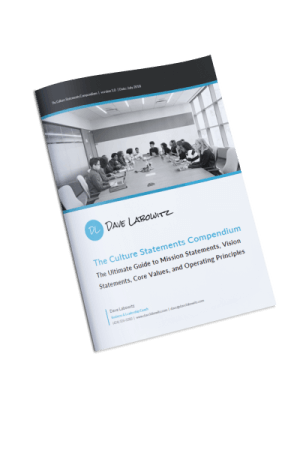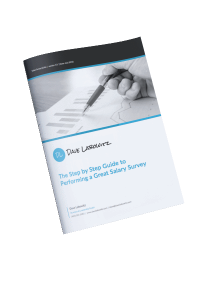By now, your organization has probably been impacted by The Great Resignation of 2021. And if not, I’m sure you’ve heard people are quitting their jobs in record numbers. This is making recruiting, hiring, and retention more challenging and important than ever. Before we dive into some things you can do to thrive despite these challenges, let’s take a look at what’s causing it.
What is causing The Great Resignation 2021?
There are probably far more things going on than we can adequately address in a single article, but here are a few of the reasons I hear most often.
- The pandemic caused people to re-evaluate their life priorities. Suddenly, money means a little bit less and flexibility, feeling valued and safe, and avoiding burnout mean more.
- Thanks to generous stimulus payments and enhanced unemployment benefits, many people have been able to build up some emergency savings. This gives them a bit more cushion than they might normally have to leave a job they’re not enjoying.
- The new remote work culture has opened up national and international opportunities for some roles that were previously restricted to local offices. All these additional job options make recruiting and hiring more difficult and competitive.
- All of the above lead up to wage inflation: the more competitive the hiring and retention environment is, the more you’ll need to raise wages or you’ll miss out on top talent.
How can you improve your recruiting and hiring practices to compete more effectively during The Great Resignation 2021?
First, above all, accept that the shifts in the marketplace are here to stay. Remote work certainly isn’t going anywhere. And the lessons people have learned from the pandemic aren’t likely to fade in the near term, either. So, it’s up to you to adjust.
Take a look at your culture
If the premise that money is no longer the top deciding factor for potential recruits is true, then your company culture has more power than ever to influence job seekers and current team members. How does your culture stack up? Start with your senior team and discuss it. From there, expand the conversation to the rest of your organization. What works well? What needs improvement? I’d suggest evaluating some of the following:
- Putting your mission, vision, values, and operating principles front and center. The Great Resignation 2021 has shown people they can prioritize working in a place they feel like a great fit. The only way for them to know if they’ll be a fit is how well you’ve clarified and communicated what you stand for.
- Schedule flexibility
- Family leave policies
- Diversity and inclusion initiatives
Can you offer remote work?
When you dig into it, one of the most common reasons people don’t want to support remote work is because “they’ve always been an in-person office.” They may fear a decline in productivity or the amount of work and unknowns involved in implementing it well. But now is not the time to be stuck in your ways. If you can figure out how to offer enduring remote work, at this point, it’s probably a good idea. At least offering some form of permanent hybrid option can be a good start.
If you’re a blue-collar shop that needs its team members on location, remote work won’t be an option. That’s ok. If the roles you hire need to be on location, the workers will recognize that their options are confined to their commutable radius.
Consider ongoing recruitment
Large businesses almost always have ads up for roles they hire regularly because they’ve scaled to the point where they’re dealing with constant employee churn. Small and mid-sized businesses, on the other hand, tend to only put up ads when they have a position to fill. The Great Resignation 2021 is making recruiting more competitive and therefore more time-consuming. It may behoove you to get ads up more proactively than you have in the past. If you see a great resume, see if you can add that person to your team now rather than waiting for a need and missing out on someone great. If you don’t have the budget for that then at least hang onto the resumes and follow up in the future.
Like it or not, The Great Resignation 2021 has created wage inflation
Just because some things have become more important than money doesn’t mean money has suddenly become unimportant. If you haven’t done it yet, now would be a good time to do some salary surveys for the positions you’re hiring (and, for that matter, for your existing team members’ roles, as well). You may find that things have increased far faster and further than you realized. If this is the case, in order to remain competitive, you may need to commit the budget to increase compensation.
I know, money doesn’t grow on trees, so this may be easier said than done. The waterfall effect here is that you may need to adjust your prices in order to cover some of the additional salary expense. No one likes doing this, but it’s happening everywhere right now so it won’t be much of a surprise to your customers. Consider the following pricing strategies:
Stand pat and take the hit
If you have a strong enough cash position and healthy margins, you have the option of leaving your prices alone. Not only could this lead to new customers as your pricing becomes comparatively less than your competitors, it may also be an opportunity to build some lasting goodwill with your client base. If you have contracts with customers, now would be a good time to ask them to extend their terms in return for locking in their pricing for a set period of time.
Split the difference
If you don’t feel good about a significant price hike at the moment, you could always make more incremental changes. Begin staggering in smaller increases over different products and services over time and revisit more often. This may help ward off customer frustration, but also runs the risk of them feeling like they’re subject to death by 1,000 cuts if you make pricing changes too often.
Do what you have to do to maintain your margins
If you think your customers will be accepting of a significant bump in prices due to inelastic demand or loyalty, then figure out your new expense budget and then set your prices in a way that will maintain your prior margin percentage.
Go full cutthroat and increase margins
If you think the negatives of a price increase could be substantial but are more about the fact that the increase happened rather than the magnitude of the increase, then you have to at least consider going big. You’ll lose some customers regardless but could gain that ground back thanks to the customers who are willing to absorb the larger increase.
Stay proactive about retention, too
Keeping your existing team in place is even more important than being able to recruit and hire effectively, yet most small and medium businesses don’t make retention a primary point of focus. Here are some things to think about:
Retention efforts start on day one
I’ve heard a shocking amount of stories during The Great Resignation 2021 about new hires ghosting employers after just a day or a week at a new job. As dismaying as this may be, it’s time to accept this is a real risk.
This means you need to pay attention to your orientation and onboarding processes. Make new hires feel valued and engaged. Their desks and computers should be set up in advance, you should have their calendar full of meetings for the first few days so they can hit the ground running, and offer a clear plan as to what their first weeks and months will be like as they ramp up. If you don’t have an office social committee, consider forming one with part of their charter being helping new hires feel welcome.
Some extra effort up front in these areas will go a long way. “You never get a second chance to make a first impression” isn’t just true when meeting your significant other’s parents, it’s true in business, too.
Stay consistent with culture, benefits, and compensation
The culture, policy, benefits, and compensation work we discussed in the recruiting and hiring section don’t just apply there. These things are even more important for your existing team than they are for prospective hires. Now is not the time to take your existing team for granted. For example, if wage inflation is pushing salaries up dramatically, you may not have the luxury of waiting until review time to make adjustments.
Additionally, these issues aren’t set-it-and-forget-it items. Revisit them regularly and stay flexible to meet the changing needs and desires of your team. They want to be heard and have a seat at the table, and it doesn’t cost anything to give that to them.
Be proactive with career-pathing
The reasons people leave jobs are legion, but lack of a career path almost always makes the list. If you want your team members to stay with you long-term, it’s critical you give them new challenges and upwards mobility. This isn’t always easy, but it’s better to engage them in conversation about possibilities proactively than sweep it all under the rug only to feign surprise when they leave for a better position.
In conclusion, The Great Resignation 2021 is making it mandatory that you get and stay well informed about the rapidly shifting trends in the employment market and keep up. Otherwise, recruiting and retaining team members will continue to get harder. Now is the time to review your culture, benefits, mission/vision/values/operating principles, wage scales, and pricing. Revisit these things at least semi-annually, and ideally quarterly. Things are moving fast these days!






